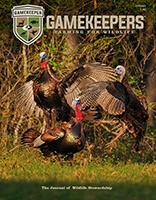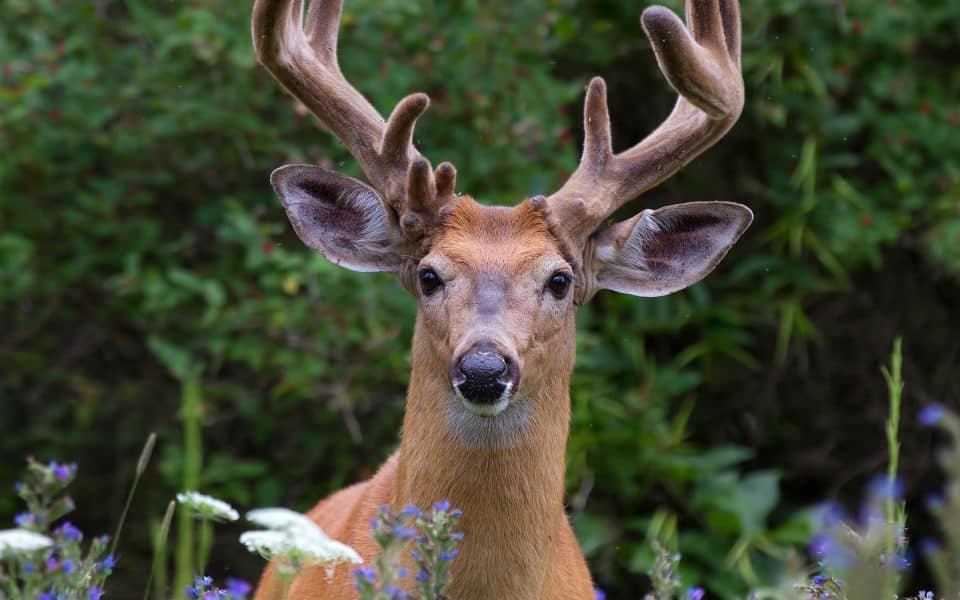When it comes to scouting for deer, many hunters wonder if their summer patterns can truly translate into fall success. Some dismiss summer scouting altogether, claiming that bucks relocate when they shed their velvet, while others rely heavily on July and August observations to plan their fall hunts. The truth lies somewhere in between. Let’s debunk some common myths about summer scouting and see how to use off-season data effectively for fall hunting success.
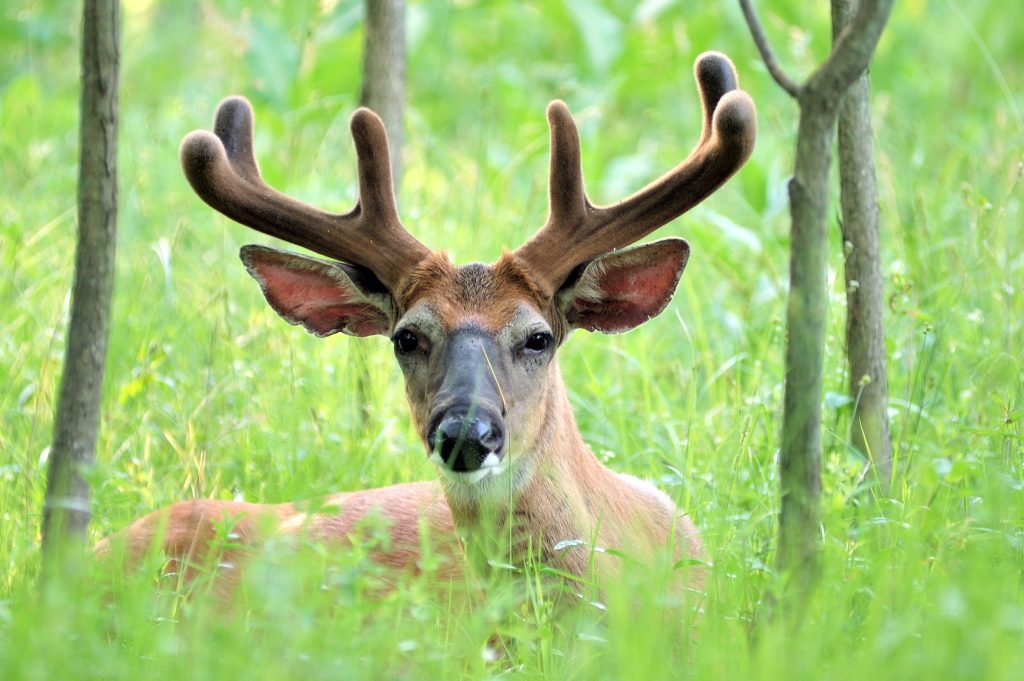
Bruce MacQueen
Myth #1: Bucks Completely Relocate in the Fall
One of the biggest misconceptions is that bucks leave their summer ranges entirely once velvet shedding occurs in early September. Their home range is their home range, almost assuredly they will be somewhere within it. While some movement does take place, studies show that many mature bucks maintain a core area year-round, with shifts within this range influenced by food sources, pressure, and breeding behaviors rather than a complete relocation. They typically make these same seasonal moves every year. Instead of ignoring summer scouting, hunters should focus on identifying key habitat features that remain relevant into the fall. Think about cover and food. Once the foliage falls from the trees will there still be enough cover to mostly conceal a whitetail? If the food and cover remains, if they have lived safely in a certain spot whitetails don’t want to move. They move because they have to find a spot with better cover or a current palatable food. Because their needs for different types of foods changes, it’s almost 100% assured what they are eating in August is going to change by October. During the summer months, they are looking for protein. However, once cold temperatures arrive carbohydrates will become more important. Preferred crops will typically change from protein rich legumes (both annuals and perennials) like soybeans, mung beans, alfalfa and clover over to carbohydrate heavy crops like cereal
grains, brassicas and corn. In addition to that, certain foods may interfere with patterns by coming into their most attractive stages. Acorns, for example, begin to drop and may affect patterns. Whitetails will usually exploit the most palatable food choice at that time until it is no longer palatable or it’s gone. So, they may relocate a bit, but they are almost certainly somewhere nearby. Use your scouting and trail cameras to document these moves and bet on them happening every year.
Myth #2: Summer Bedding and Feeding Patterns Are Irrelevant
While it’s true that deer behavior changes as acorns drop, crops are harvested, and different plants turn palatable, summer scouting provides critical clues about preferred bedding locations, travel corridors, and primary food sources. By tracking where deer feel safe during the low-pressure months of July and August, hunters can predict where bucks may retreat once hunting pressure increases.
Patterns change all year long, but they also mesh together. A simple wind storm blowing some large trees over can change travel patterns – maybe in only a small way, but still an altering force. Expect that they will change. If a buck was bedding in a small thicket, but now the leaves have fallen and you can see completely through the thicket, likely the buck will need another place to bed. Things are constantly changing; this is why it is important to continue to scout throughout the season. Keep those trail cameras moving and pay attention to when specific foods turn to their most palatable stage.
Whitetails are creatures of habit. Escape routes, as an example, are something that I pay attention to closely. I suggest keeping a journal of these. If a whitetail experiences pressure and gets away safely, if the conditions are close to the same (especially the wind direction) they are likely to escape the same way again. Obviously the form of pressure needs to be coming from a similar direction, but these are great places for ambush locations.
Myth #3: Trail Camera Data from Summer Is Useless
Some hunters believe that summer trail camera pictures are misleading because bucks will “disappear” by fall. Obviously we’ve talked about some of this above, but cameras placed tactically on water sources, major travel corridors, and secluded food plots can reveal long-term movement trends. While specific locations may shift, understanding an individual buck’s personality, how and when he moves, and who (other bucks) he’s traveling with can be valuable when transitioning into hunting season.
How to use Summer Scouting for Fall Success
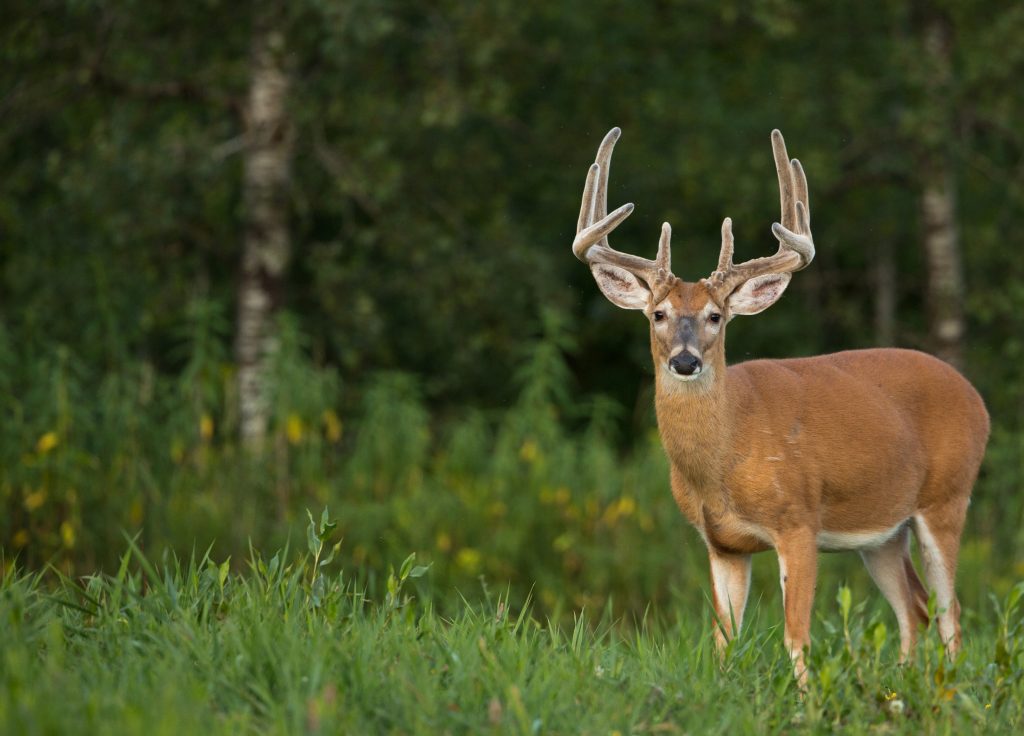
Linda Arndt
Move Quickly
Whitetails can be very predictable in their summer patterns. While you may have to deal with warm temperatures and mosquitos buzzing in your ears, if you are ready to hunt by opening day you can have a couple weeks while they are still in their summer patterns. Colder temperatures may change food sources and foliage, but it’s really the length of day, a whitetails’ pineal gland, and bucks’ testosterone that we’re up against. This will vary from north to south, but here in Minnesota I would estimate that their summer patterns are pretty reliable up through the second week in September, and some years even later.
Whitetails haven’t been molested by other hunters, there have been no berry pickers, hikers, bike-riders or leaf-watchers through their range yet and mature bucks still feel comfortable. We’ll talk about pressure (from you) coming up, but this can be one of the best times of the year for daytime encounters with mature bucks.
Identify Core Areas
Summer scouting helps pinpoint core areas that bucks prefer. Look for thick cover, hidden water sources, and food plots that provide sanctuary from our human intrusions. These areas often remain important throughout the season. Simple sign in the form of rubs, scrapes, tracks, etc., and trail camera information can help you identify these core areas. These are spots a mature buck is spending the better part of his time. While food sources will probably change, core areas may not. If a buck feels safety during the summer, if nothing disturbs the safety of his core area(s) there is a good chance he will continue to use them.
Pattern Movement, Not Just Locations
On my home property, while food sources, and in some cases bedding/core areas change seasonally, the travel corridors are pretty consistent. Instead of focusing only on where a buck is in July or August, pay attention to how he moves through the area during this time. Does he follow specific terrain features? Does he use a particular ridge or funnel that might still be relevant during the rut? Mark these down in a journal or in a hunting/management app like onX.
Anticipate Food Source Shifts
Seasonal changes in a whitetail’s diet have been happening for millennia. Acorns have been falling from trees and their nutritional needs have switched seasonally since there have been whitetails. Agricultural fields and lush browse are major summer attractants, but fall brings new food sources such as mast, harvested cash-crops and food plot crops. Identify transition areas to where deer will shift their feeding patterns. Anticipate the changes rather than acting surprised when they happen.
As mentioned, during the warmer summer temperatures, a protein rich diet is usually the norm. With cold temperatures arriving, carbohydrates will become more important. This can happen quickly. One day you’ll see them in clover or soybeans and with an overnight cold snap you can see them in cereal grains or brassicas the next day. However, with a warm up, they may move back to the clover or beans for a period. Watch your extended forecast and learn to play the conditions.
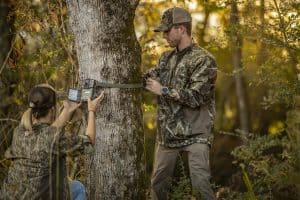
Minimize Pressure
Unwittingly, gamekeepers are often the cause of their own demise when it comes to getting close to a mature buck. A mature buck will not tolerate much of an intrusion before it changes something to avoid making contact with you. They know when they’re being hunted and these animals often figure out your movements and habits before you ever see them with your naked eye.
Bucks during the summer are often relaxed, but excessive presence in their area can condition them to knowing “hunting time is here.” Use glassing, long-range observation, and non-intrusive trail camera setups to minimize disturbance. The closer it comes to hunting season, the more “long-range” you want to become.
Most hunters also tend to go hunting whenever they have an opportunity whether the circumstances are in their favor or not. I understand that for some with limited time, you have to hunt when you have the opportunity. Ideally, however, you shouldn’t hunt if the conditions aren’t in your favor, especially the wind direction. Instead, use this time to set-up additional ambush locations so you can play different conditions. You can’t divulge your intent and blow the deal before you have an opportunity. Be sneaky! Why let them know you’re coming?
Final Thoughts
Summer scouting isn’t a waste of time—it’s a critical tool for understanding deer behavior before the season begins. I hate to sound wishy-washy about this, but truly, every property and every situation is different. There are some properties where summer scouting may not do you much good, but anytime you can scout is beneficial in my view. While specific core locations may shift as food sources change and hunting pressure increases, the data gathered in July and August can provide insights that lead to success from October through December. By focusing on movement trends, core areas, and transition zones, hunters can turn summer intel into fall results.
Join our weekly newsletter or subscribe to Gamekeepers Magazine.
Your source for information, equipment, know-how, deals and discounts to help you get the most from every hard-earned moment in the field.
